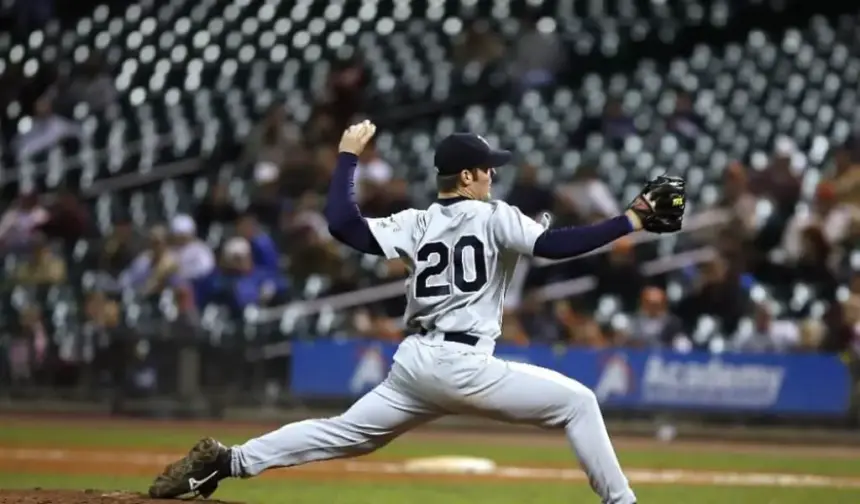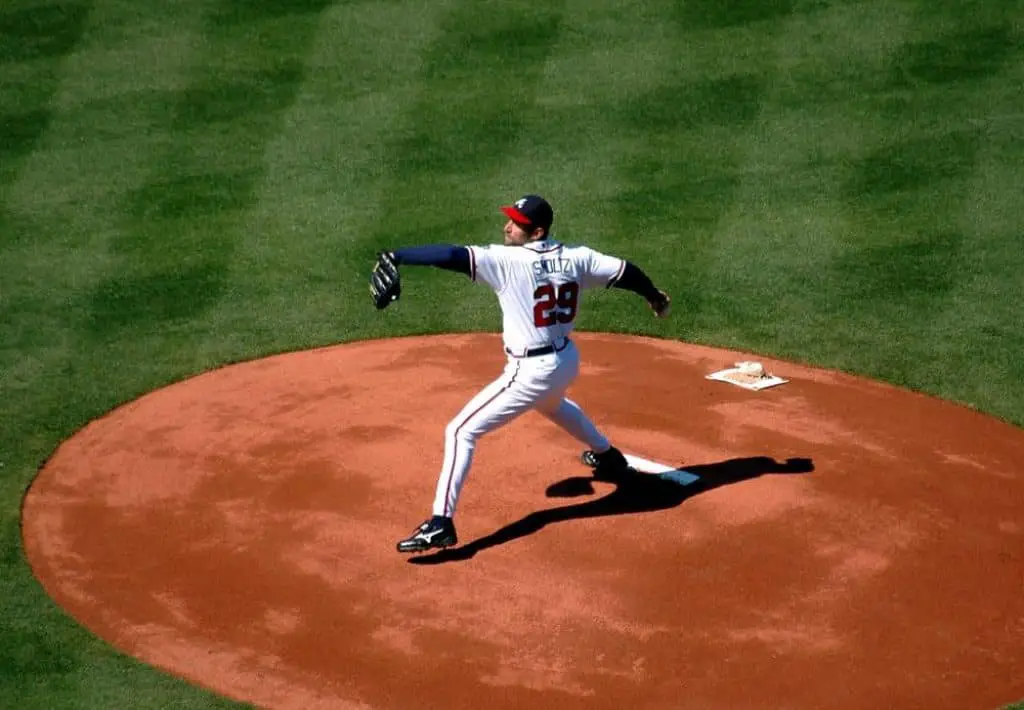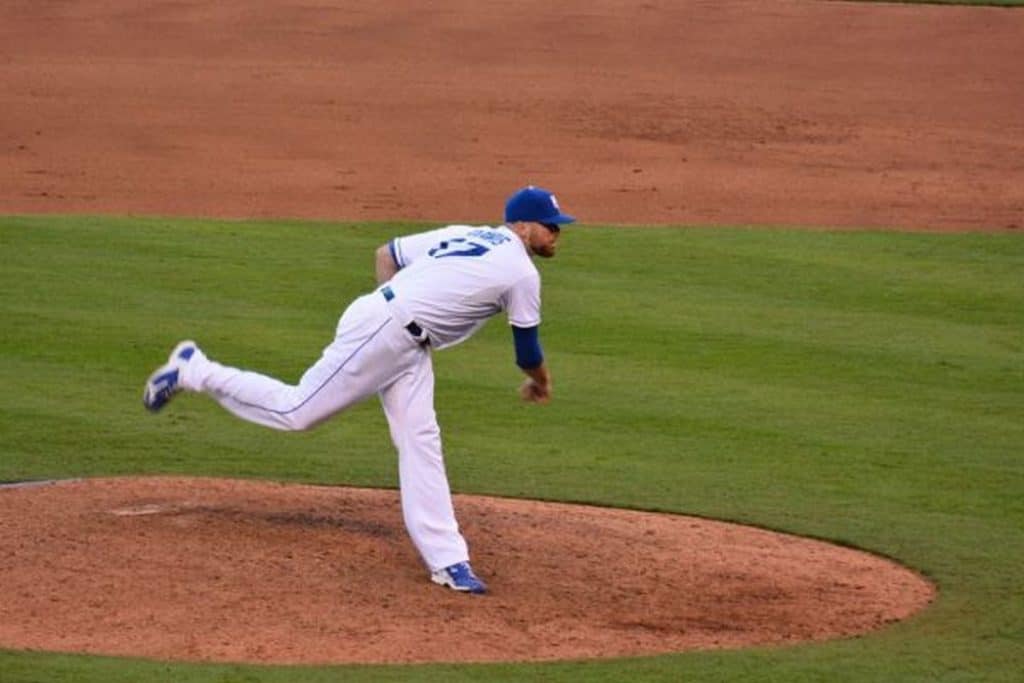What Does FPS Mean In Baseball? (Answered In Detail!)
Even though every player on a baseball team contributes to winning games, no position has as much impact as the pitcher.
Good pitching is the key to team success. After all, they’re the only ones credited with the Win/Loss statistics.
The importance of the pitcher also means that this position draws the most attention.
Pitchers and their games are constantly under scrutiny from coaches, as well as baseball experts and fans.
So, it’s no wonder that there are a ton of statistical categories used to evaluate pitchers’ performance.
Practically, every aspect of their game is thoroughly analyzed and dissected. Most fans are familiar with some of these stats, such as ERA or WHIP.
However, there are numerous other valuable tools for evaluating a pitcher’s game. Among those, one of the most useful is FPS.
Below, I’ll explain what does FPS mean in baseball and why this stat is so important.
Table of Contents
What Does FPS Mean In Baseball?

In baseball, FPS stands for first pitch strike. FPS occurs when pitchers throw a strike on the first pitch of an at-bat.
This reduces the batter’s chances of getting on base and provides an advantage for the pitcher during that at-bat.
The first pitch strike helps the pitcher get ahead in the count which is key to being successful at a particular at-bat.
On the other hand, it puts pressure on the batter, narrowing their window of opportunity to score. So, with a strike on the first pitch, the pitcher will much easier get to the second and third.
Commonly, batters like to take a pitch to settle as they step to the plate.
So, in most cases, they will swing more and usually get better results the more time they spend facing the same pitcher.
This allows pitchers to be more aggressive and go for first pitch strikes.
What Is A Good FPS In Baseball?
FPS percentage shows how successful a pitcher is on the first pitch. It’s a metric that demonstrates how often the pitcher will strike the batter with the first throw.
FPS percentage is calculated by dividing the number of first pitch strikes by the number of first pitches and then multiplying it by 100.
FPS correlates pretty well to another important pitching statistic – ERA.
A pitcher with the higher FPS% will have a lower ERA, as the strike on the first pitch commonly means fewer runs allowed.
The average MLB pitcher has an FPS percentage of around 58%, while the better and more aggressive hurdles are at around 70%.
So everything above this number should be considered a good FPS%.
Better FPS percentage leads to fewer pitches per inning which is important to a successful pitching performance.
With a 70% FPS percentage, pitchers on average throw 14.4 fewer pitches per inning.
How Important Is FPS?

First pitch strikes are important because they give the pitcher an early advantage in the count. An 0-1 count is much better than a 1-0 count.
Why?
A first-pitch strike forces the batter to be more aggressive. They may feel like they need to swing at the next pitch regardless of where it is.
This can lead to them making poor decisions and getting out early in the count.
The numbers don’t lie and they clearly show that the first pitch strike gives a great advantage to the pitcher and, eventually, leads to winning ball games.
Finally, first-pitch strikes give the pitcher confidence. They know that they can get ahead in the count and they may be more likely to throw strikes later in the game.
Per statistics, a pitcher that starts an at-bat with a strike has a 92% chance to out or strike a batter.
Plus the percentage of strikeouts that start with a strike on the first pitch is 69%. With the walks that number is at 70%.
So, this means that, after the FPS, a batter has less than an 8% chance of earning a base hit and only around 30% probability of even getting the ball into play.
According to some studies throwing a strike on the first pitch can potentially save an MLB team around 12,000 runs in just one season.
In summary, first-pitch strikes are important because they give the pitcher an early advantage, they put pressure on the batter, and they give the pitcher confidence.
These factors can all lead to the batter making poor decisions and striking out.
The Effectiveness Of A First Pitch Strike
The Effectiveness Of A First Pitch Strike Shows Up In Several Ways
Lower Walk Rates
Pitchers who can throw first-pitch strikes often have lower walk rates.
This is because they are more likely to get ahead in the count and force batters to swing at pitches outside the strike zone.
Higher Strikeout Rates
Pitchers who can throw first-pitch strikes often have higher strikeout rates.
This is because they are more likely to get ahead in the count and force batters to swing at pitches outside the strike zone.
Lower ERAs
Pitchers who can throw first-pitch strikes often have lower ERAs.
This is because they are more likely to get ahead in the count and force batters to swing at pitches outside the strike zone.
First Pitch Strike Percentage Leaders

To understand what First pitch strike percentage (FPS) means, we must first understand the strike zone.
The strike zone is the area over the home plate between the batter’s knees and chest.
A pitch that enters the strike zone is called a strike, while a pitch that does not enter the strike zone is a ball.
FPS measures the percentage of pitches that are called strikes on the first pitch. The higher the FPS, the more effective a pitcher is at getting ahead in the count.
The average FPS for all pitchers in 2018 was 63.5%.
Here are the leaders:
1. Gerrit Cole – 75.7%
2. Chris Sale – 74.1%
3. Justin Verlander – 73.9%
4. Max Scherzer – 73.8%
5. Corey Kluber – 72.9%
As you can see, the top 5 pitchers in FPS are all among the best pitchers in baseball.
This is no coincidence. Pitchers who can throw first-pitch strikes are more effective than those who cannot.
So, if you’re a pitcher, aim for a high first-pitch strike percentage. And if you’re a hitter, be aware of which pitchers tend to throw first-pitch strikes.
This information can be useful when making decisions about which pitches to swing at.
What Can Pitchers Do To Increase Their FPS Percentage?
There are a few things pitchers can do to increase their FPS percentage.
1. Use A Variety Of Pitches
Fastballs tend to be the easiest pitches for hitters to hit.
By mixing in other pitches, such as curveballs and changeups, pitchers can keep hitters off balance and more likely to swing at pitches outside the strike zone.
2. Vary The Location Of Pitches
Throwing strikes is one thing, but throwing strikes in the right locations is another.
Pitchers who can consistently hit their spots will be more effective than those who cannot.
3. Attack Hitters Early In The Count
Hitting is all about timing. The more pitchers can disrupt a hitter’s timing, the less likely they are to get hits.
One way to do this is to attack hitters early in the count.
By getting ahead in the count, pitchers can force hitters to swing at pitches they might otherwise take for a ball.
4. Use A First Pitch Strike Percentage (FPS) Calculator
Several online calculators can help pitchers track their FPS percentage.
By inputting data such as the number of first-pitch strikes and the total number of pitches thrown, pitchers can get an idea of how they stack up against other pitchers.
5. Try The StrikeOut App
The StrikeOut app is a pitch-tracking system that can help pitchers track their FPS percentage.
The app uses the iPhone’s built-in accelerometer to track the speed, spin, and release point of each pitch.
It then displays this information in an easy-to-read graph. The app also allows pitchers to compare their FPS percentage with other pitchers.
First Pitch Strikes vs. ERA
There is a strong correlation between first-pitch strikes and ERA. In general, pitchers who can throw first-pitch strikes tend to have lower ERAs.
This is because they are more likely to get ahead in the count and force batters to swing at pitches outside the strike zone.
An ERA is a measure of a pitcher’s effectiveness.
It stands for “earned run average” and is calculated by taking the number of earned runs divided by the number of innings pitched.
First-pitch strikes are an important statistic for pitchers because they increase the likelihood of getting ahead in the count.
When a batter falls behind 0-1, he is more likely to swing at pitches outside the strike zone and less likely to get a hit.
The best way to lower your ERA is to throw first-pitch strikes. This will force batters to swing at bad pitches and get ahead in the count.
When ahead in the count, pitchers can be more aggressive and attack the strike zone.
Conclusion
Even though it’s often overlooked as a metric, FPS percentage gives a pretty good insight into some aspects of a pitcher’s performance.
It’s clear how important first pitch strikes are.
They provide an advantage and morale boost for the pitcher while putting a hitter in a tight situation and under a lot of pressure.
For this reason, youth coaches are trying to teach their players to put even more focus on their first pitch as their chances of getting out with the count in their favor significantly increase.
As we learn more about the importance of first pitch strikes, there is also another tendency developing as batters now tend to swing much more on first pitches.




